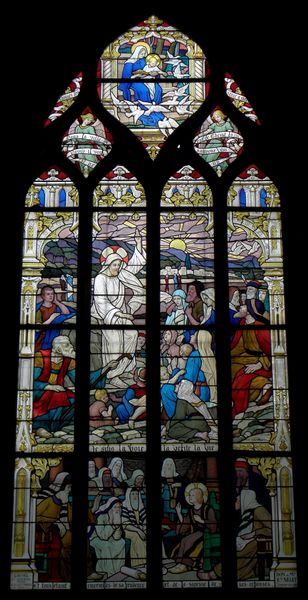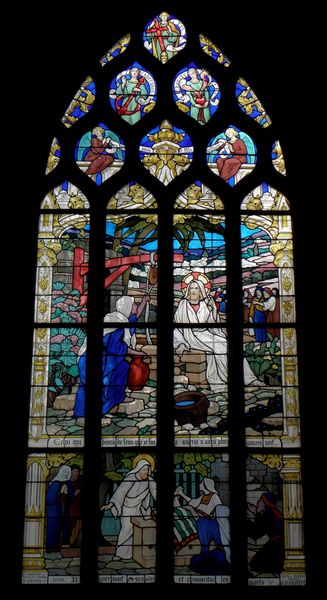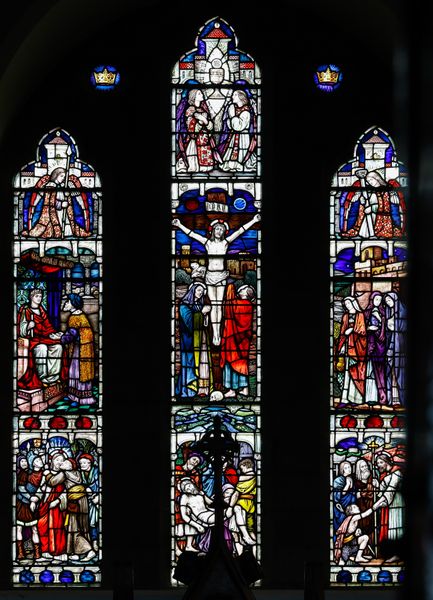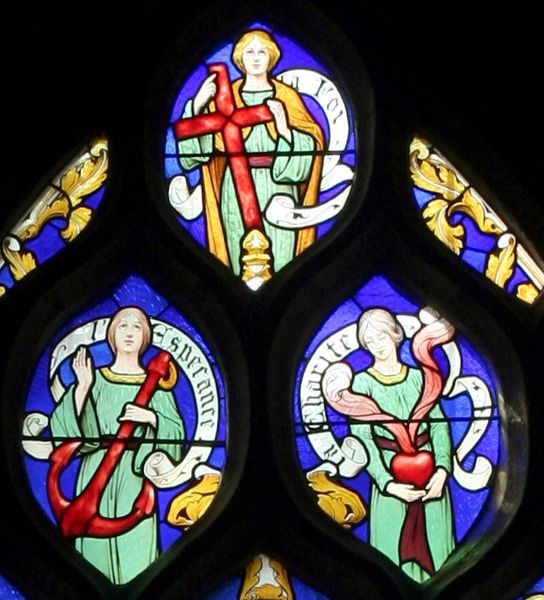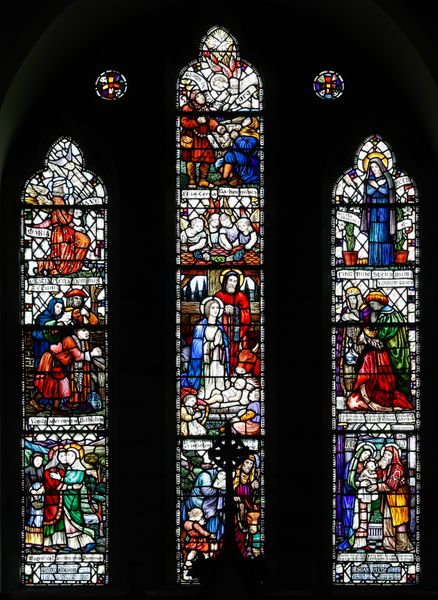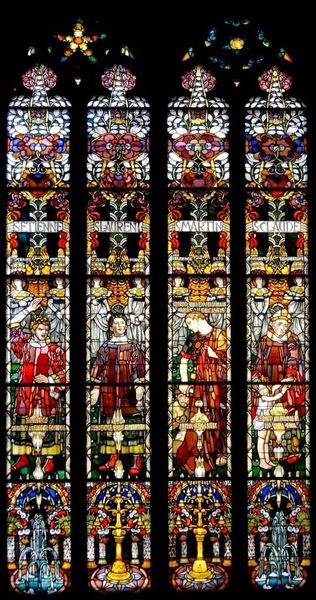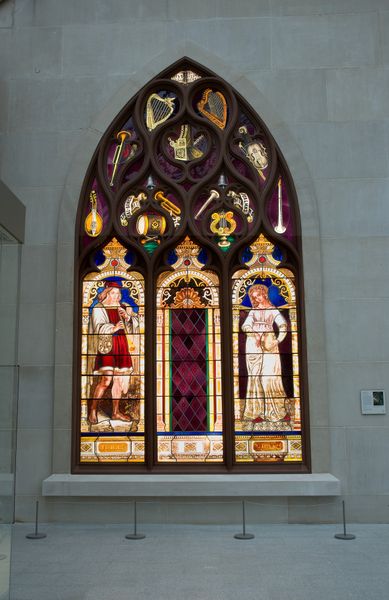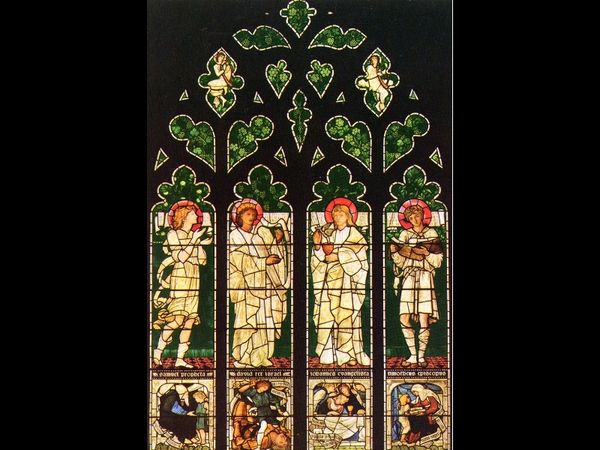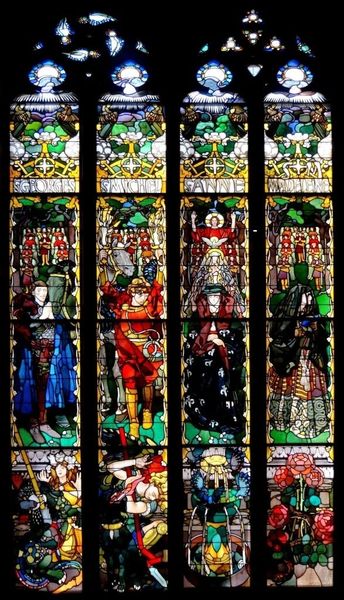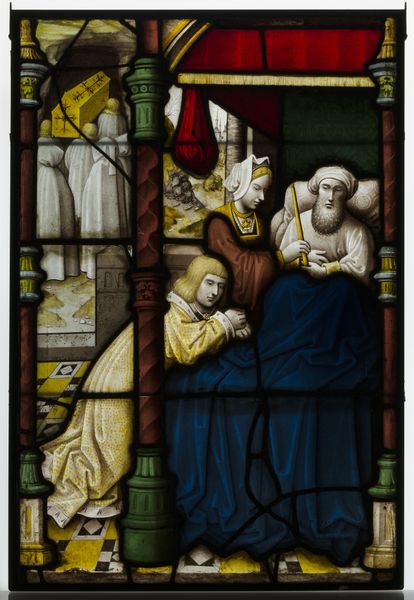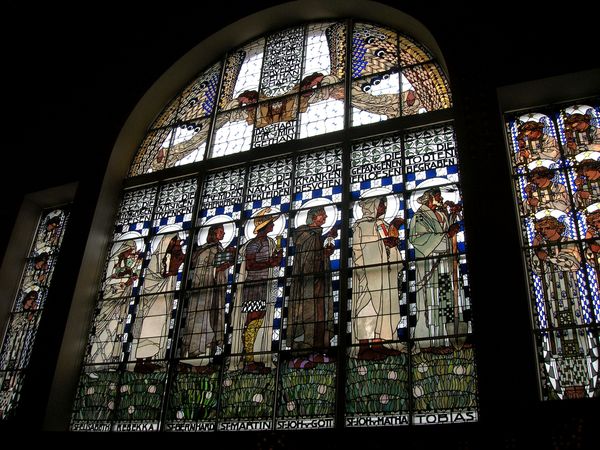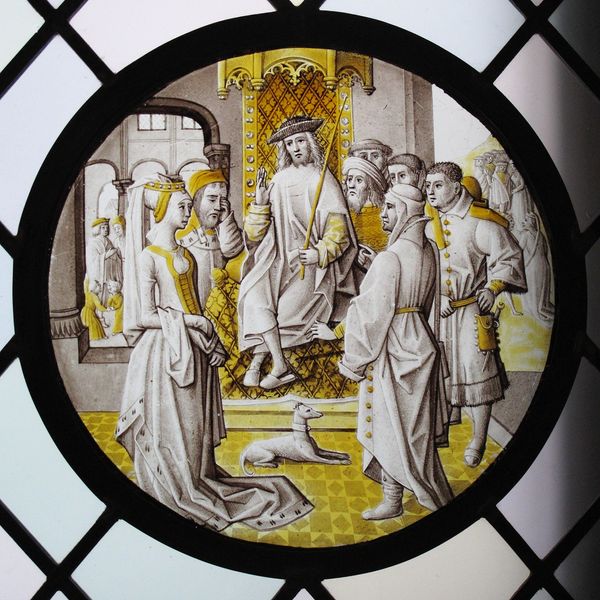
tempera, glass, mural
#
medieval
#
tempera
#
sculpture
#
gothic
#
figuration
#
historic architecture
#
traditional architecture
#
glass
#
architecture
#
christianity
#
history-painting
#
mural
#
christ
Copyright: Public domain
Editor: This striking stained-glass mural is titled *William Scott Luce* by Edward Burne-Jones. It has such strong vertical lines, emphasized by the figures and their attributes. It feels so rigidly ordered, but it uses these amazing colors! What catches your eye? Curator: The composition immediately strikes me. The triptych arrangement, subdivided further by the glazing bars, imposes a rigorous geometric order. Note how each figure inhabits its designated space, their forms echoing the elongated proportions favoured during the Gothic revival. How do you see this rigorous formalism contributing to the work's meaning? Editor: Well, the figures' postures definitely reinforce their individual virtues, like a visual encapsulation of each concept. What is the artist conveying with the lines and their arrangements, besides the virtues of the figures in the art work? Curator: Precisely! Observe, too, the subtle variations in the glass itself. Notice the textures and opacities. Light passing through this structure does more than just illuminate; it transforms the inherent material quality into an experience, imbuing the very architecture with symbolic weight. The interplay between these elements contributes profoundly to its aesthetic power. Editor: So, the grid, rather than being restrictive, provides a framework to heighten the visual and spiritual effect? It is less illustrative and more of a structured spiritual experience. Curator: Precisely. It shows us how the artist is able to orchestrate visual elements. Editor: I will definitely remember this as I view the exhibit now. Thank you!
Comments
No comments
Be the first to comment and join the conversation on the ultimate creative platform.
